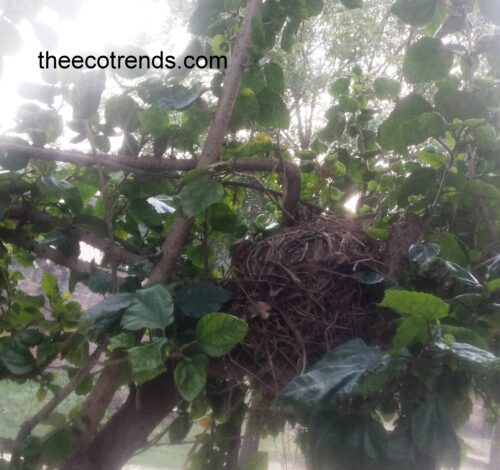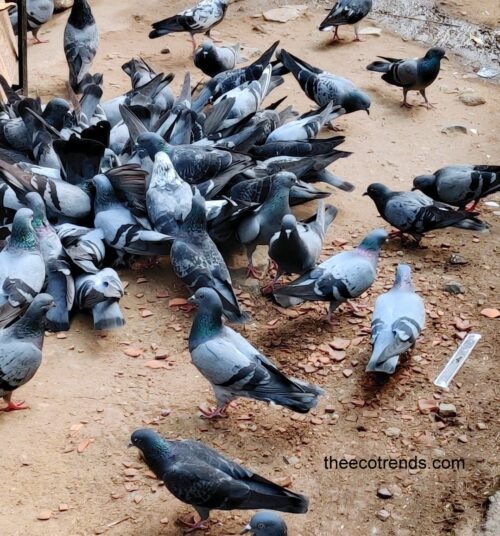Some reports regarding increasing bird trade in endangered species that were published recently in some news papers are matters of concern not alone for the lovers of environment and wildlife but for common public as well.
The reports mentioned about trade in some endangered, rare or vulnerable species of birds such as Grey Headed Parakeet, Plum Headed Parakeet, Java sparrow, and Common Hill Myna etc.
Those that live in and around Ranchi can frequently see a bird seller carrying cages of birds on his soldier, hanging down in front and back sides.
The scene is very common in other cities of Jharkhand as well, and those who live in Lohardaga, Gumla, and Simdega and Jamshedpur areas can also see bird sellers moving through streets. I have seen bird sellers in some other states also like U.P., M.P., and Bihar.
Wildlife Protection Act
In India, trade of birds, wildlife and their body parts have been banned under the Wildlife Protection Act and the Convention on International Trade in Endangered Species restricts the trade of birds. A black market involving 300 of the country’s estimated 1,200 bird species runs openly in many places. Laws that are designed to protect India’s birds are well intentioned but rarely enforced.
Bird Markets
There are big bird markets in Mumbai, Kolkata, Lucknow and many other cities in India. One of the largest illegal trades in animals takes place at Mumbai’s Crawford Market. The Bombay High Court in 1997 had ordered a committee to conduct raids at the market.
This was an effort of the court to curb illegal bird trade at least temporarily, but the committee was reported inactive. So the illegal activities of the animal dealers at the Crawford Market, as well as at other markets remained blooming.
Who help Bird Traders?
Many villagers around the city of Kolkata earn money by trapping and selling birds. Every Sunday at a market in Kolkata, these village trappers provide the local sellers with more than 6,000 birds. The next morning, the sellers offer the birds at other markets in and around Kolkata. Bird traders purchase these birds and send into other markets located either in the same state or the other.
Poachers illegally transport thousands of birds who are captured from the bird-rich hills and forests of the northeast, Uttar Pradesh and Bihar – primarily around the Gangetic Plain and in the foothills of the Himalayas – or from southern states such as Orissa, Madhya Pradesh, Maharashtra and Deccan Plateau.
These birds are Packed in small boxes and shipped on trains to different cities. According to an estimate by some bird lovers, about 60 per cent of these birds die in the transit as a result of broken wings and legs, thirst or just panic.
Now, let me introduce some of these birds to those who are not well familiar.
Grey-headed Parakeet
It is scientifically known as Psittacula finschii. It is closely related to the Slaty- headed Parakeet. These two together form a super species Psittacula finschii which is named after the German naturalist and explorer Otto Finsch.
This bird is found in North-eastern India, Burma, Thailand, Cambodia, Laos and Vietnam. This bird is recognised by its grey/ green face and dull green colour of its rest of the body, faint pale green band below cheeks and a short tail. The trade of this bird is in full swing in most of the bird markets in India.
Plum- headed Parakeet
It is taxonomically known as Psittacula cyanocephala. It is a green parrot usually up to 33 cm long and a 22cm long tail. Head of the male bird is red; and crown, nape and cheeks are purple blue. A narrow black neck collar and black chin stripe form principal features for identification of the bird.
A red patch is found on the shoulders and rump and tail are bluish- green in colour. The tip of the tail is white. Mandibles are yellowish in colour. The head of the female bird is grey; its upper mandible is corn –yellow in colour. It lacks the black neck collar, chin stripe and red patch of shoulder. Heads of young birds are green in colour with yellowish mandibles.
This bird is endemic to Indian subcontinent. However, it is a resident breeder in Pakistan, India, Sri Lanka and Bangla Desh. It is a gregarious and noisy species.
It is reported that this bird can learn to mimic beeps and whistles, though not a good talker. It nests in holes in tree trunks and lays 4 to 6 white coloured eggs.
This bird is usually found in forests and open woodlands. Its population is being reduced gradually due to trade in urban and heavily inhabited areas. Some countries have issued stamps depicting Plum- headed parakeets. These countries are Bhutan, Sierra Leone and Sri Lanka.
Java- sparrow
This bird is a small passerine bird taxonomically known as Padda oryzivora. It is locally known as Java-finch, Java rice sparrow or Java rice bird. Though it is a resident of Java, Bali, Indonesia etc. it has been introduced in a large number of other countries too.
The length of this bird is up to 17 cm. The under parts and breast of an adult bird is grey in colour. Its belly is pink, head is black, cheeks are white, eye ring is red, feet are pink, and bill is red and thick. The bill of this bird is black and bases are pink.
Song of this bird is rapid series of call notes chipchipchipchipchip …It builds nest in a tree or building and lays up to 8 eggs. It feeds on grains and other seeds. It can be frequently seen in open grassland and cultivation.
Habitat loss and large scale hunting are serious threats to this bird. It is this reason that Java sparrow has become uncommon in its native range. The IUCN (International Union for Conservation of Nature) – red list of threatened species has listed it as vulnerable.
It has been placed in Appendix II of CITES. In India, it is found as introduced species but it is not a successful resident of Indian mainland. It has established a breeding population around Colombo, Sri Lanka, several of the Hawaiian Islands etc.
Common Hill Myna
This bird is a resident of Hill regions of South Asia, and Southeast Asia, Hill Myna is a member of Starling Family which is taxonomically known as Sturnidae. It is stocky-jet black bird. It has orange- yellow patches on naked skin and fleshy wattles on the side of its head and nape.
Its length ranges from 20 to 29 cm. This bird is taxonomically known as Gracula religiosa. The plumage of this bird is black purple tinged on head and neck. Large white wing patches on wing are obvious in flight but covered when the bird is sitting. Bill and legs are bright yellow. Yellow wattles are found on the nape and under the eyes.
The Hill Myna is a resident breeder from Kumaun division in India, Nepal, Sikkim, Bhutan, Arunachal Pradesh, the Lower Himalyas, Terrai and foothills up to 200m. It is reported extinct in Bangladesh due to habitat destruction and over exploitation for the pet trade.




